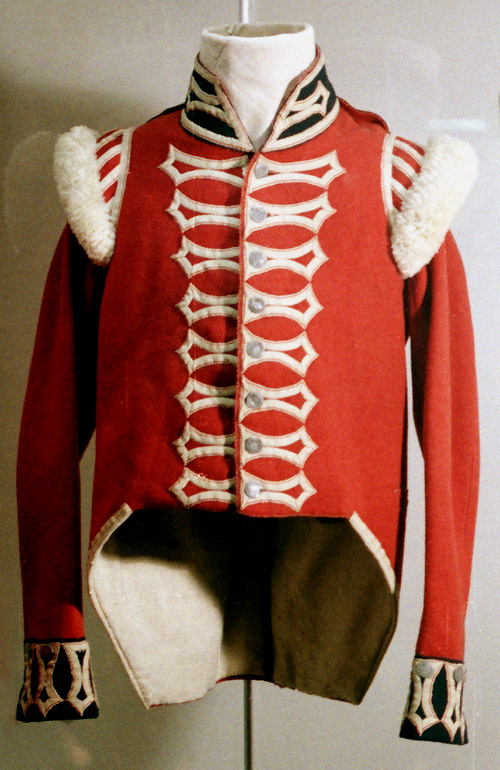coatee on:
[Wikipedia]
[Google]
[Amazon]
 A coatee was a type of tight fitting uniform
A coatee was a type of tight fitting uniform
 A coatee was a type of tight fitting uniform
A coatee was a type of tight fitting uniform coat
A coat typically is an outer garment for the upper body as worn by either gender for warmth or fashion. Coats typically have long sleeves and are open down the front and closing by means of buttons, zippers, hook-and-loop fasteners, toggles, a ...
or jacket
A jacket is a garment for the upper body, usually extending below the hips. A jacket typically has sleeves, and fastens in the front or slightly on the side. A jacket is generally lighter, tighter-fitting, and less insulating than a coat, which ...
, which was waist length at the front and had short tails behind. The coatee began to replace the long tail coat
A tailcoat is a knee-length coat characterised by a rear section of the skirt, known as the ''tails'', with the front of the skirt cut away.
The tailcoat shares its historical origins in clothes cut for convenient horse riding in the Early Mode ...
in western armies at the end of the eighteenth century, but was itself superseded by the tunic
A tunic is a garment for the body, usually simple in style, reaching from the shoulders to a length somewhere between the hips and the knees. The name derives from the Latin ''tunica'', the basic garment worn by both men and women in Ancient Rome ...
in the mid nineteenth century.
A coatee, worn with a waistcoat
A waistcoat ( UK and Commonwealth, or ; colloquially called a weskit), or vest ( US and Canada), is a sleeveless upper-body garment. It is usually worn over a dress shirt and necktie and below a coat as a part of most men's formal wear. I ...
or vest, remains part of formal Highland dress
Highland dress is the traditional, regional dress of the Highlands and Isles of Scotland. It is often characterised by tartan (''plaid'' in North America). Specific designs of shirt, jacket, bodice and headwear may also be worn along with clan ...
.
References
{{Clothing Coats (clothing) Jackets Military uniforms History of clothing (Western fashion) History of fashion